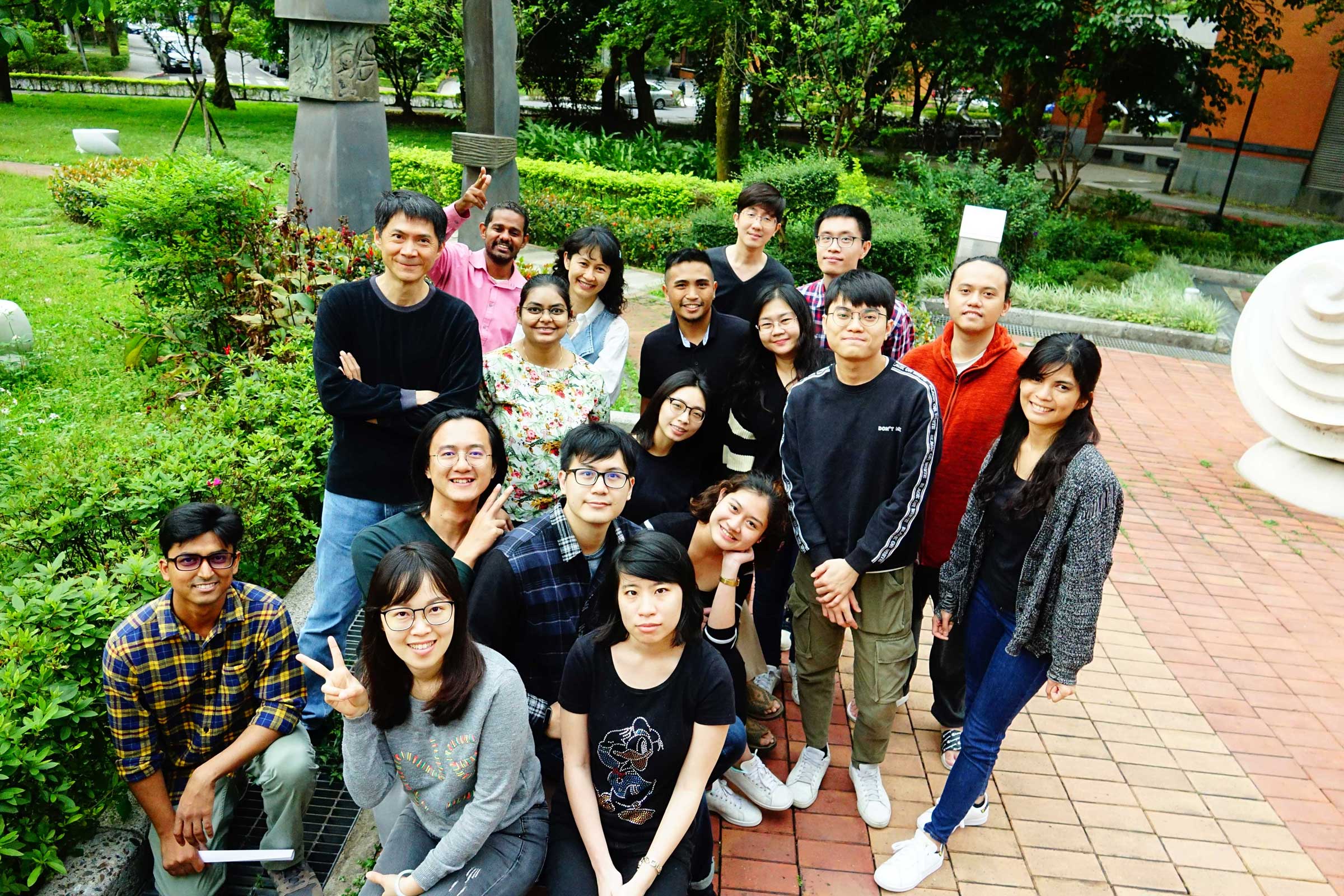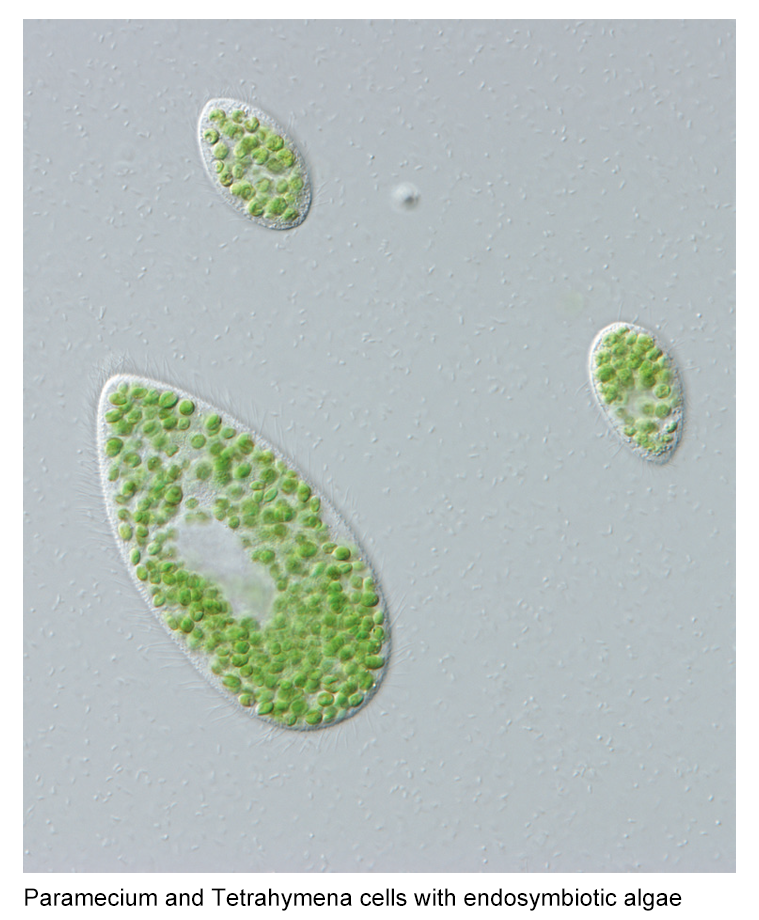內共生,表現型穩定性和物種演化的一般原理和分子機制
1) 利用基因體分析來瞭解草履蟲和小球藻內共生的關係
為什麼一個生物可以活在另一個生物體內而不會引起問題呢?內共生是驅動真核細胞演化的主要力量之一(粒線體與葉綠體是最有名的例子),在當今自然界中也隨處可見內共生的例子。 然而,共生體如何在宿主細胞中建立內共生的過機制至今仍不清楚。我們使用兩種纖毛蟲(草履蟲和四膜蟲)以及小球藻,來研究內共生的早期發生過程。 纖毛蟲是一類古老而多樣的原生生物,在細胞生物學上具有許多與眾不同又有趣的特徵。小球藻則是在生物科技工業中常被應用的材料,例如生質能源的生產。 利用纖毛蟲和小球藻,不但讓我們能夠研究內共生建立的遺傳機制,也可以進一步探索其他細胞生物學以及生物科技工業相關的問題。
2) 表現型穩定性的演化與分子機制
為什麼細胞可以在各種環境和遺傳背景下都保持一致的性能呢?儘管受到外在環境和內在遺傳突變的干擾,都能保持穩定表現型的能力是生命系統的基本屬性。 長期以來,科學家一直相信細胞中含有主緩衝系統,該系統可以在一般狀況下維持穩定的表現型,並在壓力下對其進行調節。緩衝系統對於穩定環境和遺傳擾動下的細胞生理和發育過程至關重要。 此外,緩衝系統還可以調整演化的速度節奏,因為它們能夠緩和這些變動,或幫助一個群體累積在天擇競爭下必要的遺傳變異。雖然遺傳和非遺傳緩衝效應的概念,已得到普遍的認可,但是潛在的分子機制並不清楚。 我們實驗室中將結合實驗演化和基因體組分析,用系統生物學方法探討這個問題。
- PDF, 2000-2006, Dept. Dept. Mol. & Cell Biol., Harvard Univ., USA
- Ph.D., 1999, Dept. Mol. Cell, & Dev. Biol., Yale Univ., USA
- MS, 1990, Dept. Life Sciences, Natl. Tsing-Hua Univ.
- BS, 1988, Dept. Chemical Engineering, Natl. Tsing-Hua Univ.
- 2022, Ministry of Education Annual Academic Award (教育部學術獎)
- 2021, Ministry of Science and Technology Outstanding Research Award (科技部傑出研究獎)
- 2018, Outstanding Scholar Award, Foundation for the Advancement of Outstanding Scholarship (傑出人才發展基金會傑出人才講座)
- 2013, National Science Council Outstanding Research Award (國科會傑出研究獎)
- 2009, Academia Sinica Research Award for Junior Investigators in Taiwan, 2009 (中研院年輕學者著作獎)
- 2007, International Human Frontier Science Program (HFSP) Young Investigators’ Award (國際人類前沿科學計畫年輕研究學者獎)
- Kamal, M.M., Cheng, Y.-H., Chu, L.-W., Nguyen, P.T., Liu, C.-F.J., Liao, C.-W., Posch, T., and Leu, J.-Y.* “Environment-dependent mutualism-parasitism transitions in the incipient symbiosis between Tetrahymena utriculariae and Micractinium tetrahymenae” ISME J. 19(1): wraf203 (2025).
- Hsu, P.-C.*, Lu, T.-C., Hung, P.-H. and Leu, J.-Y.* “Protein moonlighting by a target gene dominates phenotypic divergence of the Sef1 transcription regulatory network in yeasts.” Nucleic Acids Res. 52(22): 13914-13930 (2024).
- Yeh, C.-W., Hsu, K.-L., Lin, S.-T., Huang, W.-C., Yeh, K.-H., Liu, C.-F.J., Wang, L.-C., Li, T.-T., Chen, S.-C., Yu, C.-H., Leu, J.-Y., Yeang, C.-H., Yen, H.-C.S.* “Altered assembly paths mitigate interference among paralogous complexes.” Nature Commun. 15:7169 (2024).
- Lin, W.-H., Opoc, F.J.G., Liao, C.-W., Roy, K.R., Steinmetz, L.M. and Leu, J.-Y.* “Histone deacetylase Hos2 regulates protein expression noise by potentially modulating the protein translation machinery.” Nucleic Acids Res. 52(13): 7556-7571 (2024).
- Chen, Y.-H., Chao, K.-H., Wong, J.-Y., Liu, C.-F.J., Leu, J.-Y.* and Tsai, H.-K.*, “A feature extraction free approach for protein interactome inference from co-elution data.” Brief. Bioinform. 24(4): bbad229 (2023).
- Lai, H.-Y., Yu, Y.-H., Jhou, Y.-T., Liao, C.-W. and Leu, J.-Y.* “Multiple intermolecular interactions facilitate rapid evolution of essential genes.” Nature Ecol. Evol. 7(5): 745-755 (2023).
- Swamy, K.B.S., Lee, H.-Y., Ladra, C., Liu, C.-F.J., Chao, J.-C., Chen, Y.-Y. and Leu, J.-Y.* “Proteotoxicity caused by perturbed protein complexes underlies hybrid incompatibility in yeast.” Nature Communications 13: 4394 (2022).
- Amine, A.A.A., Liao, C.-W., Hsu, P.-C., Opoc, F.J.G. and Leu, J.-Y.*, “Experimental evolution improves mitochondrial genome quality control in Saccharomyces cerevisiae and extends its replicative lifespan.” Current Biology 31(16): 3663-3670 (2021).
- Leu, J.-Y., Chang, S.-L., Chao, J.-C., Woods, L.C. and McDonald, M.J.* “Sex alters molecular evolution in diploid experimental populations of S. cerevisiae.” Nature Ecology Evolution 4(3): 453-460 (2020).
- You, S.-T., Jhou, Y.-T., Kao, C.-F. and Leu, J.-Y.* “Experimental evolution reveals a general role for the methyltransferase Hmt1 in noise buffering.” PLoS Biology 17(10): e3000433 (2019).
- McDonald, M.J.*, Yu, Y.-H., Guo, J.-F., Chong, S.-Y., Kao, C.-F. and Leu, J.-Y.* “Mutation at a distance caused by homopolymeric guanine repeats in Saccharomyces cerevisiae.” Science Advances 2: e1501033 (2016).
- Siegal, M.L.* and Leu, J.-Y.* “On the nature and evolutionary impact of phenotypic robustness mechanisms.” Annual Review of Ecology, Evolution, and Systematics 45: 495-517 (2014).
- Hsieh, Y.-Y., Hung, P.-H., Leu, J.-Y.* “Hsp90 regulates non-genetic variation in response to environmental stress.” Molecular Cell 50: 82-92 (2013).
- Chou, J.-Y., Hung Y.-S., Lin, K.-H., Lee, H.-Y. and Leu, J.-Y.* “Multiple molecular mechanisms cause reproductive isolation between three yeast species.” PLoS Biology 8(7): e1000432 (2010).
- Lee, H.-Y., Chou, J.-Y., Cheong, L., Chang, N.-H., Yang, S.-Y. and Leu, J.-Y. (2008) “Incompatibility of nuclear and mitochondrial genomes causes hybrid sterility between two yeast species.” Cell 135: 1065-1073.


